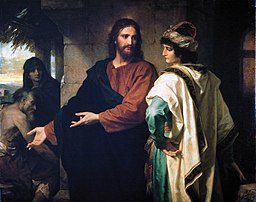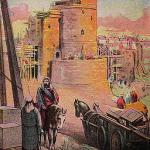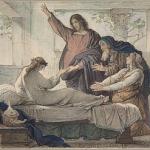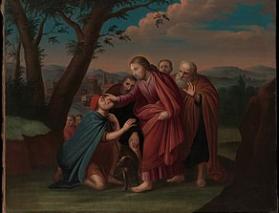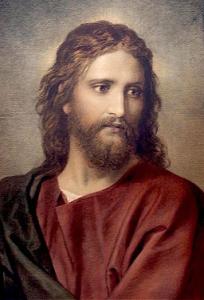
My health issues often make me dizzy or light headed—I bump into walls, doors, furniture, or anything else that won’t move out of the way. My life changed when I got an apparatus with four wheels, handlebars, and brakes, along with a seat and a back support for resting. Americans call it a “walker”; the British call a “walking frame.” I prefer frame. It doesn’t walk, and it doesn’t make me walk; my frame helps me focus and direct my steps for my own situation, purpose, and needs. This frame has become my personal parable. I am blessed by the gospel—my frame for needed focus and direction as I choose, learn, enact.
To Walk With Confidence
I love to walk— to think, meditate, examine, reason, and create. My frame allows me to walk alone safely. I still steer and decide when to apply the brakes, but it helps me stay aligned—upright facing ahead.
The critical frame for life is God’s plan of salvation (happiness, joy and, I like to add, safety). Elder M. Russell Ballard advised setting goals and plans “within the framework of our Heavenly Father’s eternal plan . . . [to] focus on this eternal path.” He added that this is the goal of the Father and the Son: “They have a perfect love for us, more powerful than we can even begin to comprehend. They are totally, completely, eternally aligned with us.” 1
The Father and the Son will not force us into Their framework or onto Their path. When we choose the framework They provide, They will support us, guide us, and be with us on our journey.
To Move Forward with Patience
The four wheels of my walking frame were not made for speed or pressure. Larger front wheels turn easily for versatility; smaller rear wheels face only straight for stability. In the past I’ve enjoyed running, but now I’ve learned to treasure the slower movement: to see more, enjoy wider perception, and be more grateful for and thoughtful about what I see.
Patience is critical within my frame that is spiritual. As Elder Dieter F. Uchtdorf has taught, Patience is a “purifying process that refines understanding, deepens happiness, focuses action, and offers hope for peace.” He continued,
Patience is not passive resignation or inaction. Patience means active waiting and enduring. It means staying with something and doing all that we can—working, hoping, and exercising faith; bearing hardship with fortitude, even when the desires of our hearts are delayed. Patience is not simply enduring; it is enduring well! 2
We trust our spiritual frame—the plan, along with the commandments, the ordinances, and the love within it—and we act tirelessly in faith to endure well with it.
To Follow the Holy Ghost
The guidance of the Holy Ghost is with us continually. In my frame to move toward spiritual progression, I bump into uncertainties, as I often do when walking outdoors.
Elder Dale G. Renlund spoke of “the framework within which the Holy Ghost functions to provide personal revelation.” He explained, “When we operate within framework, the Holy Ghost can unleash astonishing insight, direction and comfort.” But he warned that our personal revelation is “only within our purview.” My spiritual frame functions in all aspects of my life, responsibilities, and development. We covenant to love and serve others, not to push them.
Although he didn’t refer to this as “frame function,” President Russell M. Nelson gave us more specific instructions. He recommended studying the scriptures “in a spirit of delightful discovery and faithful obedience” until they are “an integral part of our nature.” The Prophet promised, “the Holy Ghost will speak to your mind and your heart.” 3
Another Framework Reminder
I find continual inspiration in my frame that hangs on my bedroom wall. The image at the beginning of this blog is a painting by Heinrich Hofmann, sometimes given the title “Christ at 33.” I have it in a gold frame, which draws my eyes instantly to the beauty of the Savior’s face. The love so incredibly portrayed reminds me of the infinite and eternal love He has for us.
This painting was taken from a much larger painting: “Christ and the Rich Young Ruler,” portraying the account in Matthew 19, Mark 10, and Luke 18. In the larger masterpiece (image below) the Savior is portrayed beside the splendidly dressed young man, with two characters behind who clearly live in poverty (a man obviously very ill and a woman assisting him). There are also a building, trees, and distant mountains.
Christ loved the young man and hoped that he would give up his worldly wealth and follow the truth. To focus on the gentle love in His expression invites us into a spiritual dimension beyond the background and the well-known story. In the more expansive and complex painting, shown below, some impact is lost.
There is a reason that what may be considered a “detail” in the original now seems to be more often collected and viewed as a closer framed focus. The original painting coveys a story; the closer focus portrays Christ’s love.
I am richly blessed by my frames, as they draw me in to my blessings within and gratitude for God’s eternal frame of wisdom and truth.
